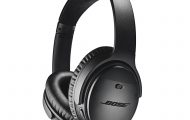Stronger Economy May Weaken Netbook Sales | Wi-Fi Planet
Netbook growth might end when economy recovers, says iSuppli
My comments on this issue
The “people’s cars” that were built in Europe.
Between the 1930s and the 1960s, VW, Citroen, British Motor Corporation and Fiat had put in to their lineup a small simple car which sold at a price affordable for most people in the country they were sold in. Before these vehicles came on the market, vehicles that were on the market wore priced out of reach of most people living in Europe. In some cases, the national governments were involved in the manufacture and sale of the vehicles to their citizens.
The vehicles, which were the VW “Beetle”, the Citroen 2CV, the Morris Minor, the Mini and the Fiat 500, had minimal equipment levels and were powered by a low-power engine which was of a simple design with the power going via a three or four-speed manual gearbox. These cars, which were of the sedan (saloon) body style, were able to comfortably accommodate four adults including the driver or a family of two adults and three children at a pinch.
But through the life of the models, they had undergone significant revisions to make them to the same standards as one of today’s small cars. For example, some of the cars were equipped with more powerful engines and had equipment which they did not have previously like electric windscreen washers or wind-down windows. The vehicle builders also had issued the vehicles in different body styles such as a delivery van, or convertible as well as the standard sedan (saloon) body style. In the 1960s, most of these vehicles had undergone a “rework” which had modern conveniences, improved performance and compliance with newer road-safety expectations integrated in to their design.
Now these cars had acquired “cult status” especially amongst people of the “baby-boom” generation. This was due to the vehicles being used by their family as the main household vehicle or these people buying them as their first car. The minimalist design that these vehicles had also been valued by the 1960s hippie culture. The vehicle builders had responded with or are responding with “one-more-time” designs of these vehicles which look similar to the original model but have a design based on a current-issue small car. These cars are still considered “cool” and fashionable amongst today’s generation.
How this relates to the netbook.
I see the netbook as being akin to these “people’s cars” – a computer designed with a quaintly simple design with a simple outlook for a simple purpose. Then, like the vehicle builders had done with the “people’s cars”, the manufacturers will supply newer models with improved performance, capacity and functionality but in the same form factor, especially as the financial situation improves. Similarly, operating systems available for installation on these devices will end up being able to do most of what a full-size computer can do.
How the netbook could be relevant in a stronger economy
The netbook would evolve as a lightweight small-unit alternative to the economy notebook for the entry-level computing market. This class of users will want to start out on something simple so they can “get the hang” of the technology and work out their direction with it.
It would then exist as a secondary-computer option especially for users like journalists or students who want a highly-portable computer to take “out and about”, especially for notetaking or liveblogging. On the other hand, it could exist as an alternative to the mobile Internet device or the smartphone as one’s personal computing device.
It can also exist simply in a home network simply as a secondary “floater” computer that is moved between the kitchen, main lounge area (where most of the TV viewing is done), the outdoors entertaining area and similar common areas for online activity like interacting with TV-show Websites or responding to social networks and Web-based e-mail.
The thing to remember about these devices is that they won’t be used by most computer users as a primary desktop or laptop computer. They will simply be seen as an extension of one’s computing life.

